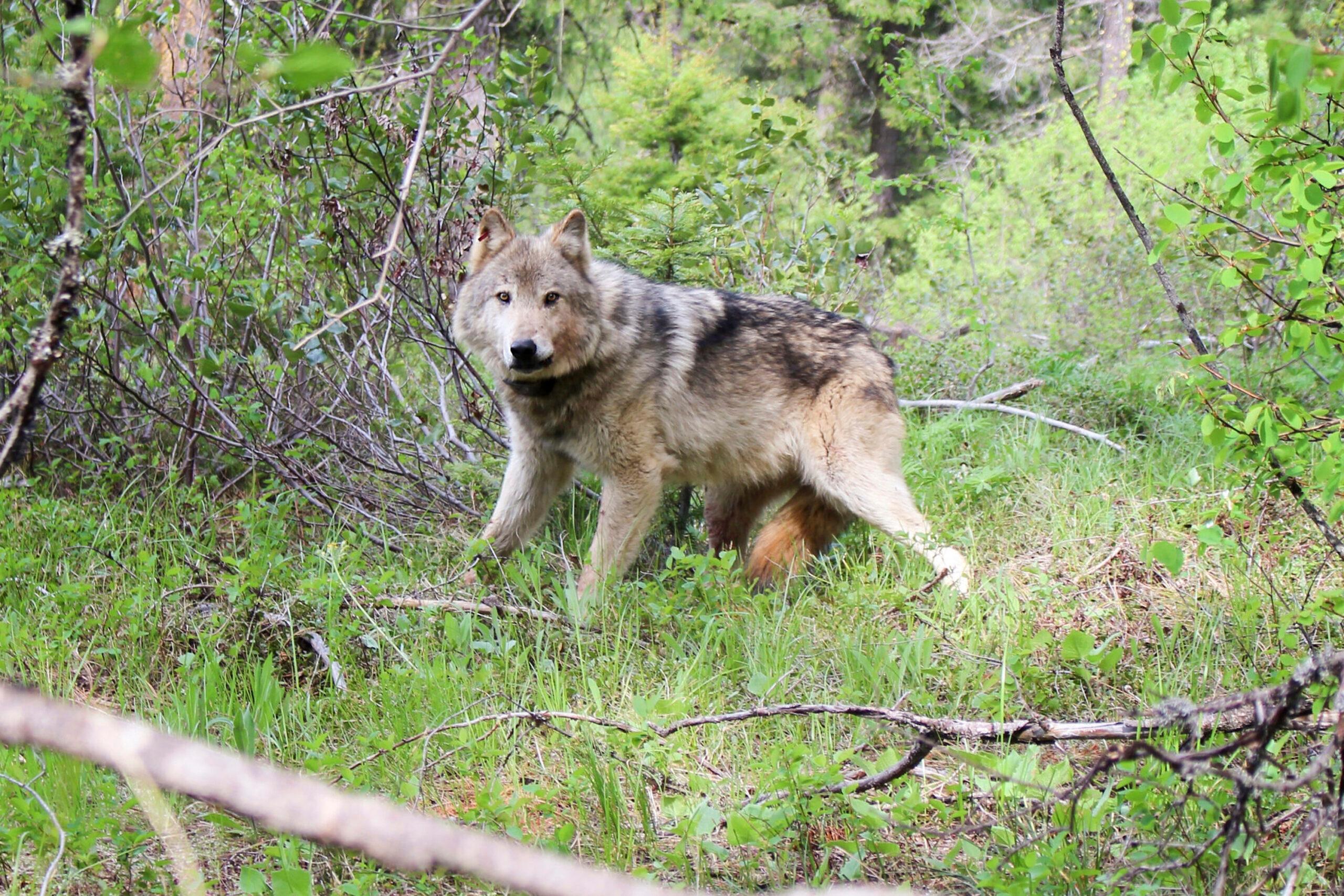
Updated 3:05 p.m.
Thirty to 50 wolves in the next five years. Brought from somewhere in the northern Rockies. Released in south-central Colorado.
Those are some details in a new draft wolf management plan released by state wildlife managers on Friday. The long-awaited document details the state’s proposal to carry out a 2020 ballot initiative ordering wolf reintroduction.
Under the measure, Colorado must put "paws on the ground" somewhere on the Western Slope by 2024 and offer fair compensation for lost livestock. The initiative otherwise gave state wildlife managers broad leeway to guide the reintroduction process.
At a virtual commission meeting Friday, Reid DeWalt, the assistant director for wildlife and natural resources for Colorado Parks and Wildlife, said the plan reflects hundreds of hours of staff time, dozens of community meetings and careful consideration of available science.
"This plan strikes a balance where wolves will be fully restored and those impacted by their release will be fully compensated," DeWalt said.
The draft plan codifies many of the recommendations from a pair of advisory groups the state convened last year. Both met for months to identify practices to reestablish wolves while minimizing conflicts with people and livestock.
Here are some of the highlights from Colorado's plan to rebuild a sustainable wolf population —something the state’s lacked for more than 80 years.
- Reintroduction pace: Colorado hopes to reintroduce 30 to 50 wolves over the next three to five years. It's unclear how many wolves the agency plans to release next winter.
- Wolf source locations: Colorado plans to capture 10 to 15 wild wolves annually over the next three to five years. The preference for donor populations is Wyoming, Montana and Idaho. If that proves impossible, the state could consider populations in Washington or Oregon.
- Release locations: The plan commits to only release wolves more than 60 miles from state borders to reduce the possibility that the predators immediately migrate into Utah, Wyoming or New Mexico. An additional geographic limit comes from the ballot initiative, which ordered releases on the Western Slope. The result is a "donut hole" in the south-central part of the state. The plan says next year's release should occur in the area's northern section, which is essentially the Interstate 70 corridor running between Vail and Glenwood Springs. Under the proposal, reintroduction will occur on private or state land.
- Legal protections: Wolves are currently considered an endangered species under state law. The plan outlines a system to decrease protections as the wolf population grows, reclassifying the animals as a threatened species if Colorado counts more than 50 wolves in four successive years. Wildlife officials could consider reclassifying wolves as a game species if there are more than 150 wolves for two years or more than 200 wolves in a single year. That change could open the door to a regulated wolf hunt.
- Lethal control: Under the plan, the state retains the right to kill wolves that develop a habit of preying on livestock or damaging game populations.
- Compensation for lost livestock: The plan details a system to pay ranchers more than the market value of animals killed by wolves. A livestock owner may seek additional compensation if he or she proves a wolf loss. At that point, they can choose to receive up to 7 times the value of the original animal or itemize the cost of additional losses, like livestock gaining less weight due to nearby wolves.
The agency will take public comment on the proposal through next February before the commission takes a final vote next May.
The plan won immediate praise from nine out of 17 members of the Stakeholders Working Group, which the state convened to recommend policies to reduce conflicts between wolves and people. In a joint statement, the group — which includes conservation advocates, ranchers and hunters — said the plan puts Colorado on the path to becoming a “beacon” for effective wolf conservation.
“At a time when there will be loud voices and potential litigation that could further divide Coloradans around wolf reintroduction, we are coming together today to say ‘Colorado can be different,’” the statement reads.
The proposed program to pay for lost livestock appealed to Erin Karney, the executive vice president of the Colorado Cattlemen’s Association. She said her members wanted a system to cover both the value of lost livestock and any associated costs of living near the predators. Some studies have suggested nearby wolves reduce weights and birthrates in cattle.
Under the proposal, ranchers would have a pair of options if they can prove wolves killed a sheep or calf. The livestock owner could ask the state to pay five times the market value of the lost animals — or seven times the value if they took steps to minimize conflicts between wolves and livestock. Wyoming offers a similar seven-to-one ratio.
Another option is to supply an itemized list of additional losses possibly related to wolves, including documentation of additional missing animals, reduced weight gain or lower conception rates.
“If we want to make reintroduction successful, we need to make sure livestock producers are compensated. I believe this will do so,” Karney said.
Not everyone was so positive about the proposal.
Months before the release of the draft, a coalition of environmental groups published an alternative reintroduction plan after seeing initial recommendations from the state working groups.
Chris Smith, a wildlife advocate for WildEarth Guardians, said the draft confirms many of the coalition’s biggest fears. In his view, it gives wildlife managers unnecessary discretion over when to kill wolves, fails to close the door on a regulated wolf hunt and sets population targets far below what some biologists say is necessary for the species to sustain itself.
“There are some good elements in it, but it needs scrutiny from commission members who have scientific backgrounds,” Smith said.
The agency will take public comment on the proposal through next February before the commission takes a final vote next May.
This is a developing story and will be updated.
More wolf coverage:
- Colorado is set to release its draft wolf reintroduction plan. Here are 6 big questions it could answer
- Colorado Parks and Wildlife can’t find any evidence of a mystery wolf pack killing cattle near Meeker
- Here’s the general region where Colorado plans to reintroduce wolves









